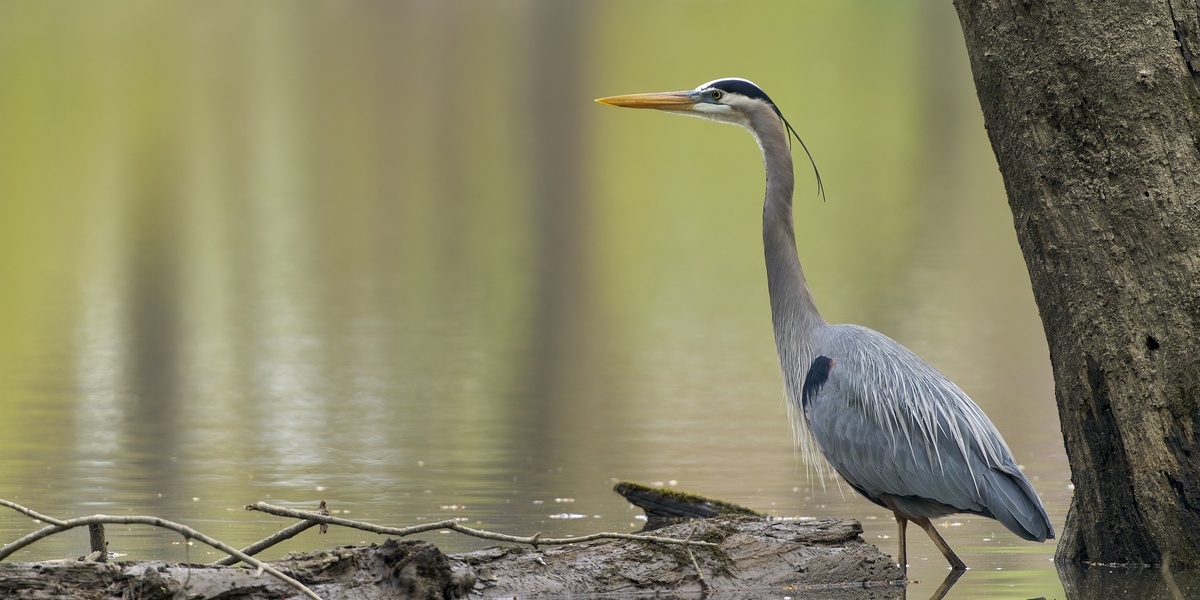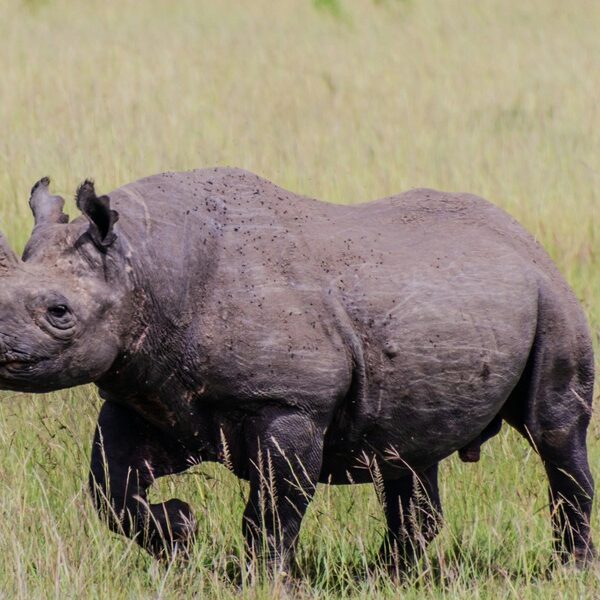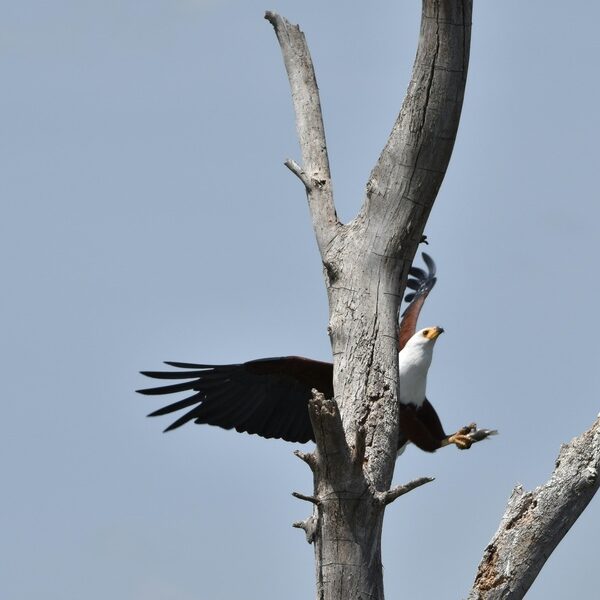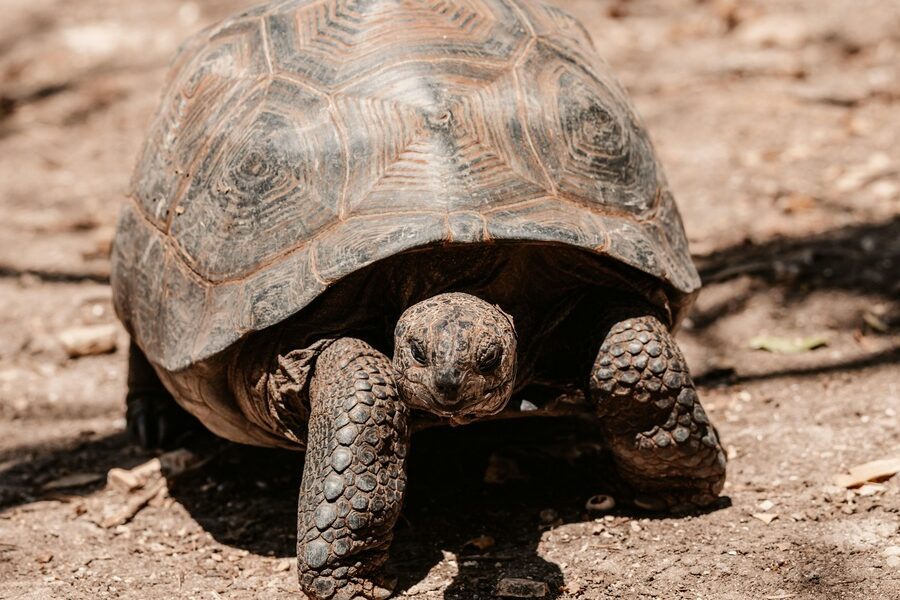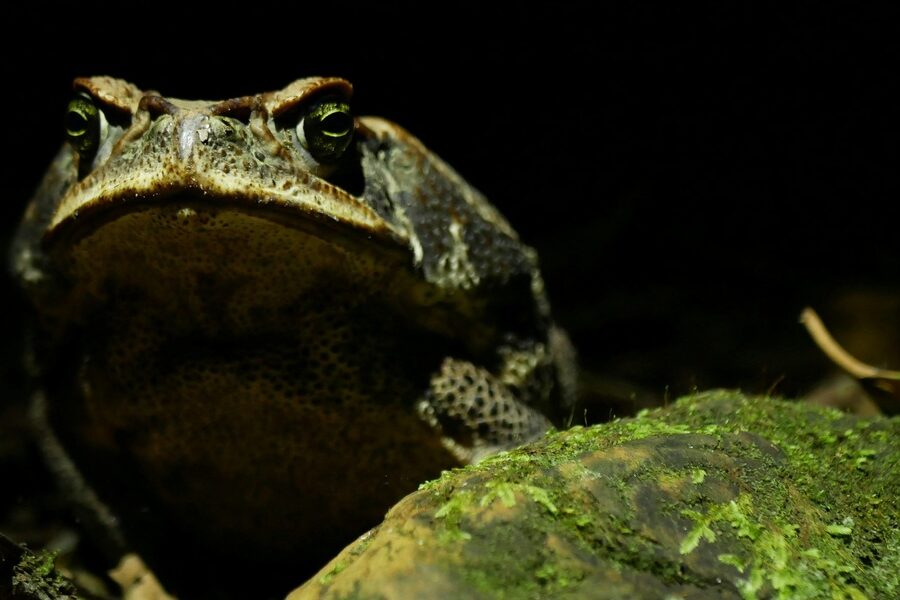Marshes, swamps, and river edges host a surprising variety of life that supports water filtration, bird migration, and fish nurseries; these liminal landscapes are worth a closer look whether you’re walking a boardwalk or planning habitat restoration. A short list can help you spot patterns and learn which species to expect where.
There are 74 wetland animals, ranging from American Alligator to Zebra Mussel. For each entry, data are organized as Scientific name, Size (cm), Range / Habitat — you’ll find below.
Does this list include every species I might see in local wetlands?
The list is a curated selection of 74 species meant to represent common and ecologically significant wetland animals, but local biodiversity will vary by region and season; use this as a starting point and consult local field guides or conservation agencies for a complete inventory.
How should I read the Size (cm) and Range / Habitat columns?
Size (cm) gives a typical adult measurement (often a range or average) and Range / Habitat summarizes where the species is usually found and its preferred wetland types; treat these as general guidance and check scientific sources for precise measurements or local records.
Wetland Animals
| Common name | Scientific name | Size (cm) | Range / Habitat |
|---|---|---|---|
| Mallard | Anas platyrhynchos | 60 | Northern Hemisphere, ponds and marshes |
| Great Blue Heron | Ardea herodias | 115 | North America, freshwater marshes, estuaries |
| Great Egret | Ardea alba | 100 | Worldwide temperate/tropical wetlands, marshes, mangroves |
| Pied-billed Grebe | Podilymbus podiceps | 30 | North America, freshwater ponds and marshes |
| Common Moorhen | Gallinula chloropus | 32 | Europe, Asia, Africa wetlands, reedbeds |
| American Bittern | Botaurus lentiginosus | 65 | North America, cattail marshes and wetlands |
| Sora | Porzana carolina | 20 | North American marshes, shallow freshwater wetlands |
| King Rail | Rallus elegans | 40 | Atlantic/Gulf coastal marshes, freshwater marshes |
| Red-winged Blackbird | Agelaius phoeniceus | 23 | North American marshes, reedbeds, wet meadows |
| Whooping Crane | Grus americana | 140 | North American marshes, wetlands, prairie ponds |
| Sandhill Crane | Antigone canadensis | 120 | Northern Hemisphere wetlands, marshes, fields |
| Mute Swan | Cygnus olor | 150 | Eurasia, introduced worldwide, lakes and marshes |
| Northern Shoveler | Spatula clypeata | 46 | Northern hemisphere shallow wetlands |
| Northern Pintail | Anas acuta | 65 | Northern hemisphere wetlands, shallow marshes |
| Common Teal | Anas crecca | 34 | Eurasia, western Palearctic wetlands and marshes |
| Black-necked Stilt | Himantopus mexicanus | 40 | Americas, shallow saline and freshwater wetlands |
| American Coot | Fulica americana | 38 | North America freshwater lakes, marshes, ponds |
| Eurasian Spoonbill | Platalea leucorodia | 70 | Europe, Asia, Africa shallow lakes and estuaries |
| Avocet | Recurvirostra avosetta | 42 | Eurasia, tidal flats, saline marshes |
| Common Snipe | Gallinago gallinago | 26 | Eurasia, wet meadows and marshes |
| Pied-billed Grebe | Podilymbus podiceps | 30 | North America, freshwater ponds and marshes |
| American White Pelican | Pelecanus erythrorhynchos | 200 | North American lakes, riverine wetlands |
| Little Egret | Egretta garzetta | 55 | Old World wetlands, estuaries, marshes |
| Great Cormorant | Phalacrocorax carbo | 90 | Coastal and inland wetlands, lakes and estuaries |
| American Beaver | Castor canadensis | 90 | North America rivers, ponds, marshes |
| Eurasian Beaver | Castor fiber | 85 | Europe and Asia rivers, ponds, wetlands |
| Muskrat | Ondatra zibethicus | 40 | North America wetlands, marshes, river edges |
| North American River Otter | Lontra canadensis | 100 | North America rivers, marshes, lakes |
| Eurasian Otter | Lutra lutra | 90 | Europe and Asia rivers, coastal wetlands |
| American Mink | Neogale vison | 45 | North America wetlands, riverbanks, marshes |
| Water Vole | Arvicola amphibius | 20 | Europe, riverbanks, wet meadows |
| Capybara | Hydrochoerus hydrochaeris | 130 | South America wetlands, marshes, riverbanks |
| Platypus | Ornithorhynchus anatinus | 45 | Eastern Australia freshwater streams, wetlands |
| West Indian Manatee | Trichechus manatus | 300 | Caribbean, coastal estuaries, mangrove lagoons |
| Marsh Deer | Blastocerus dichotomus | 150 | South American marshes, flooded grasslands |
| Common Frog | Rana temporaria | 9 | Europe ponds, marshes, damp habitats |
| American Bullfrog | Lithobates catesbeianus | 20 | North America freshwater ponds and wetlands |
| Marsh Frog | Pelophylax ridibundus | 12 | Europe and Asia marshes, ponds |
| Green Tree Frog | Hyla cinerea | 6 | Southeastern North America swamps and marsh edges |
| Tiger Salamander | Ambystoma tigrinum | 23 | North America ponds, seasonal wetlands |
| American Alligator | Alligator mississippiensis | 350 | Southeastern US freshwater marshes, swamps |
| Nile Crocodile | Crocodylus niloticus | 500 | Sub-Saharan Africa rivers, floodplains, marshes |
| Freshwater Turtle (Painted Turtle) | Chrysemys picta | 15 | North America ponds, marshes, slow rivers |
| Snapping Turtle | Chelydra serpentina | 40 | North America wetlands, ponds, rivers |
| Northern Water Snake | Nerodia sipedon | 100 | North America marshes, ponds, streams |
| Mudskipper | Periophthalmus argentilineatus | 20 | Indo-Pacific mangroves, tidal mudflats |
| Northern Pike | Esox lucius | 120 | Northern hemisphere lakes, marshy waters |
| Common Carp | Cyprinus carpio | 75 | Eurasia, introduced worldwide, lakes and slow rivers |
| European Perch | Perca fluviatilis | 40 | Europe, Asia lakes, rivers, marsh channels |
| Largemouth Bass | Micropterus salmoides | 60 | North America lakes, swamps, vegetated wetlands |
| Channel Catfish | Ictalurus punctatus | 70 | North American rivers, oxbows, backwaters |
| Striped Mullet | Mugil cephalus | 60 | Worldwide coastal estuaries, tidal flats, lagoons |
| Mangrove Rivulus | Kryptolebias marmoratus | 6 | Neotropics, mangrove pools and tidal creeks |
| Three-spined Stickleback | Gasterosteus aculeatus | 6 | Northern hemisphere coastal marshes, estuaries |
| Common Green Darner | Anax junius | 84 wingspan | North America ponds, marshes, lakes |
| Freshwater Pearl Mussel | Margaritifera margaritifera | 10 | Europe riverine wetlands, clean streams |
| Signal Crayfish | Pacifastacus leniusculus | 15 | North American rivers, ponds (invasive in Europe) |
| Marsh Snail (Great Pond Snail) | Lymnaea stagnalis | 3 | Eurasia ponds, marshes, slow rivers |
| Fiddler Crab | Uca spp. | 4 | Global mangroves, salt marshes, tidal flats |
| Zebra Mussel | Dreissena polymorpha | 4 | Eurasia, invasive in North American lakes and rivers |
| Palaemonetes (Grass Shrimp) | Palaemonetes spp. | 4 | Temperate to tropical estuaries, marsh creeks |
| Bog Turtle | Glyptemys muhlenbergii | 12 | Eastern North America bogs, fens, marshy wetlands |
| Flat-headed Cat | Prionailurus planiceps | 65 | Southeast Asia peat swamp forests, mangroves |
| Shoal Grass Shrimp (Palaemon varians) | Palaemon varians | 4 | European estuaries, saltmarsh creeks |
| Eurasian Bittern | Botaurus stellaris | 70 | Europe reedbeds, freshwater marshes |
| Mangrove Horseshoe Crab | Carcinoscorpius rotundicauda | 40 | Southeast Asian mangroves, tidal flats |
| Painted Snipe | Rostratula benghalensis | 26 | Africa and Asia marshes, shallow wetlands |
| Black-tailed Godwit | Limosa limosa | 40 | Eurasia wet grasslands, floodplain marshes |
| Peregrine Falcon (wetland-associated populations) | Falco peregrinus | 40 | Coastal cliffs and wetland edges worldwide |
| European Eel | Anguilla anguilla | 60 | Europe estuaries, freshwater wetlands, rivers |
| Greater Flamingo | Phoenicopterus roseus | 120 | Africa, Asia, Europe saline lakes and lagoons |
| Mangrove Tree Crab | Aratus pisonii | 4 | Neotropical mangroves and estuarine forests |
| American Woodcock | Scolopax minor | 25 | North American wet thickets, moist woods |
| Northern Lapwing | Vanellus vanellus | 32 | Eurasia wet grasslands, marsh edges |
Images and Descriptions
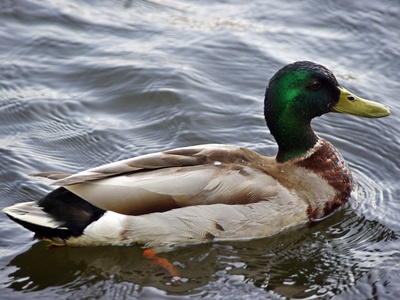
Mallard
A familiar dabbling duck with glossy green head males, quiet mottled females. Feeds on surface vegetation and invertebrates, nests near water; important seed disperser and indicator of wetland health, adaptable but affected by pollution and habitat loss.
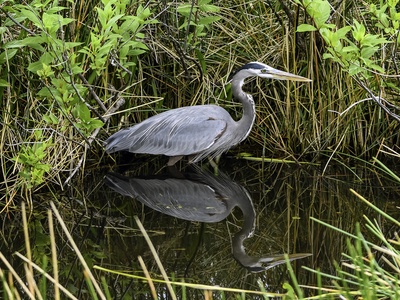
Great Blue Heron
Tall, slow-stalking heron that hunts fish and amphibians from shallow water. Solitary or colonial nester in trees, pivotal predator shaping wetland food webs; sensitive to disturbance at nesting colonies and a favored sight for birdwatchers.
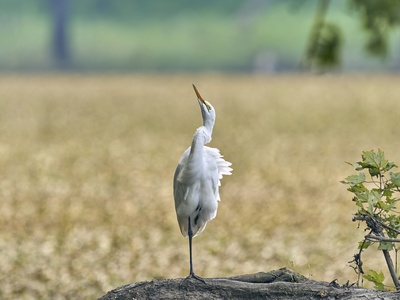
Great Egret
Elegant white heron with long neck and yellow bill that spears fish in shallow water. Colonial nester; once hunted for plumes, now conservation success in some regions but still vulnerable to wetland loss and pollution.
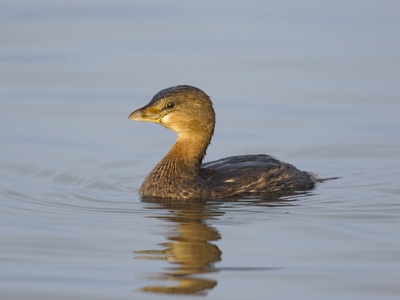
Pied-billed Grebe
A small diving bird that swims low and surfaces briefly. Eats fish and invertebrates, nests among emergent vegetation. Known for clutching to floating plants; sensitive to water quality and invasive vegetation changes.
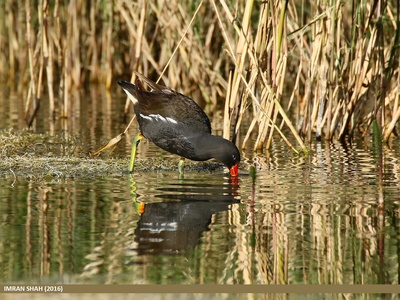
Common Moorhen
A secretive rail with red frontal shield and long toes that walks on vegetation. Omnivore feeding on plants, insects and small fish; nests in dense marshes and provides visible signs of healthy wetland vegetation.
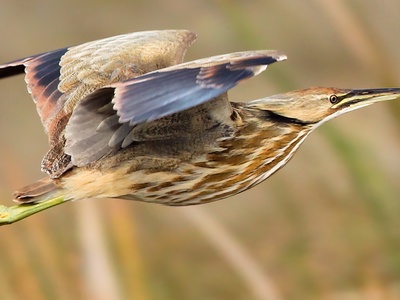
American Bittern
Cryptic, streaked heronlike bird that freezes with bill-up posture to avoid detection. Eats fish and amphibians from dense marsh vegetation; sensitive to drainage of emergent wetlands and a useful barometer of intact marsh habitat.
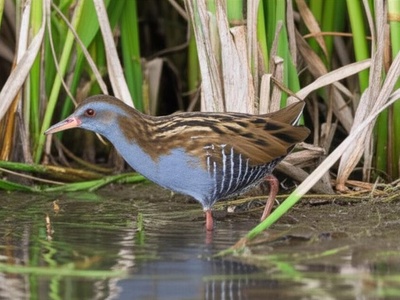
Sora
Small secretive rail with short bill that forages in mud for insects and seeds. Often heard more than seen, uses dense emergent vegetation for nesting; depends on seasonal wetlands and is vulnerable to wetland drainage.
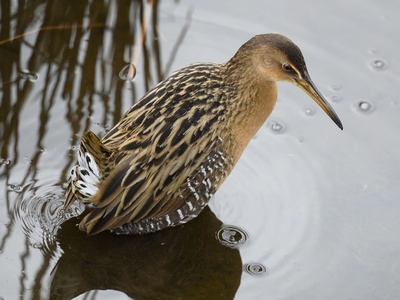
King Rail
Largest North American rail, secretive yet depends on dense cattails for nesting and feeding on crustaceans and small fish. Populations decline where marshes are diked or polluted; conservation focuses on marsh restoration.
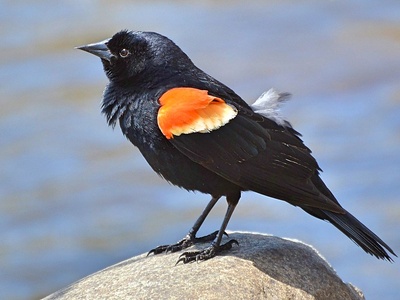
Red-winged Blackbird
Common perching passerine with red shoulder patches on males. Territorial over emergent marsh nests, eats insects and seeds; abundant indicator species but sensitive to large-scale habitat conversion of wetlands.
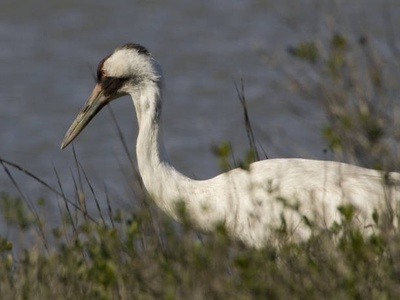
Whooping Crane
Iconic endangered crane that nests in northern wetlands and migrates to coastal marshes. Requires large, undisturbed wetlands for breeding and roosting; conservation success relies on protecting and restoring wetland habitats.
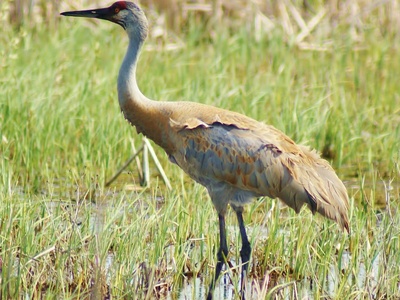
Sandhill Crane
Large gray crane that feeds in shallow wetlands and adjacent fields on plants and small animals. Uses wetland roosts for safety; some populations adapted to human-modified landscapes, but breeding wetlands remain crucial.
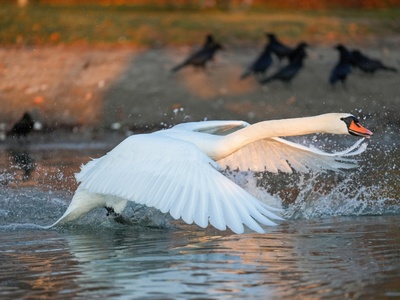
Mute Swan
Large white swan grazing on submerged vegetation in shallow wetlands. Can dominate plant communities where introduced; nests on reedbeds and islands, serving as visible symbol of wetland birdlife.
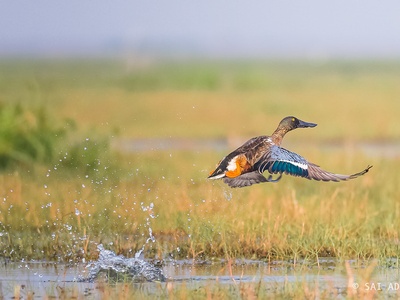
Northern Shoveler
Dabbling duck with distinctive spatulate bill used to sieve plankton and small invertebrates from water. Often forms large flocks in marshes and flooded fields; sensitive to wetland alteration that reduces shallow feeding habitat.
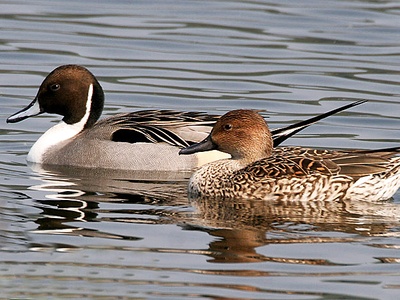
Northern Pintail
Slim, graceful duck with long tail in males; forages in shallow waters on seeds and invertebrates. Migratory species that relies on seasonal wetlands for breeding and stopover; vulnerable to loss of shallow wetlands.
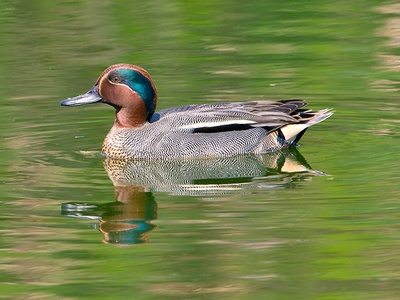
Common Teal
Small dabbling duck frequenting marshes, flooded fields and shallow lakes. Feeds on seeds and aquatic invertebrates; early migrants that use wetlands as vital stopovers during migration.
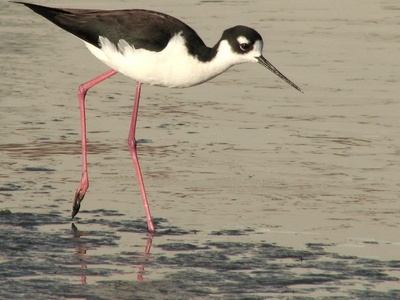
Black-necked Stilt
Long-legged shorebird with black-and-white plumage that probes mudflats and shallow pools for invertebrates. Nests on bare ground near water, sensitive to disturbance and water-level changes in coastal and inland wetlands.
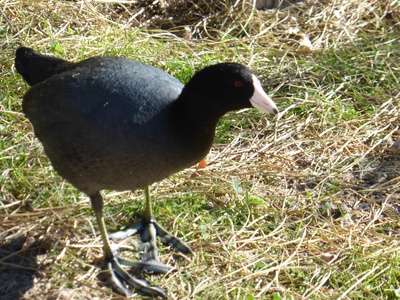
American Coot
Stocky rail-like waterbird with lobed toes that dives and grazes on aquatic plants and invertebrates. Often seen in large flocks on open water; nests among emergent vegetation and reacts strongly to wetland degradation.
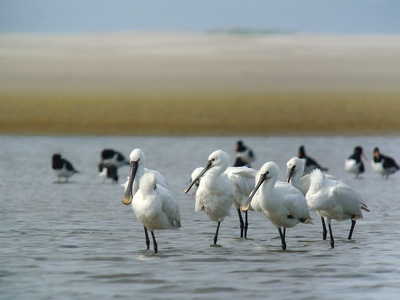
Eurasian Spoonbill
Unique spoon-shaped bill used to sweep for small fish and invertebrates in shallow waters. Colonial nester in wetlands and mangroves; conservation depends on maintaining productive shallow feeding habitats.

Avocet
Long-legged wader with upcurved bill that sweeps mud for crustaceans. Characteristic black-and-white plumage and striking feeding behavior make it a wetland specialist reliant on intertidal flats and saline lagoons.
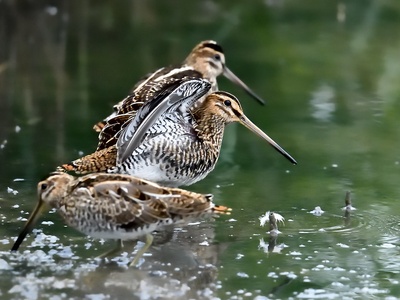
Common Snipe
Cryptic shorebird with long bill probing soft mud for worms and insect larvae. Famous for aerial “drumming” courtship; depends on soft, wet soils and tall vegetation for nesting and feeding.

Pied-billed Grebe
(duplicate avoided)
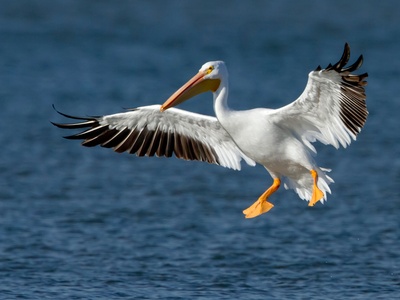
American White Pelican
Large white pelican that fishes cooperatively in shallow lakes and marshes. Relies on abundant fish and undisturbed nesting islands; sensitive to water-level changes and pollutant bioaccumulation.
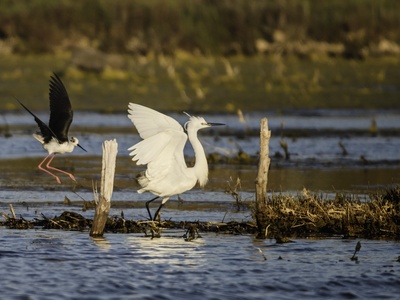
Little Egret
Slender white egret with black legs and yellow feet, active wader in shallow water. Hunts fish and invertebrates by foot-stirring; benefits from healthy mudflat prey populations and protected shallow wetlands.
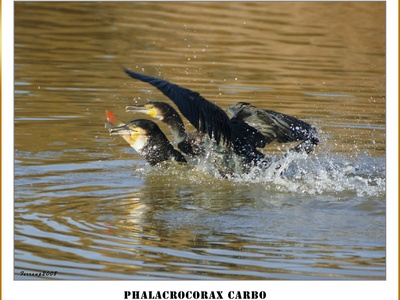
Great Cormorant
Diving bird that pursues fish underwater in freshwater and brackish wetlands. Often perches with wings outstretched to dry, roosts on islands and rocks; population trends tied to fish availability and water quality.
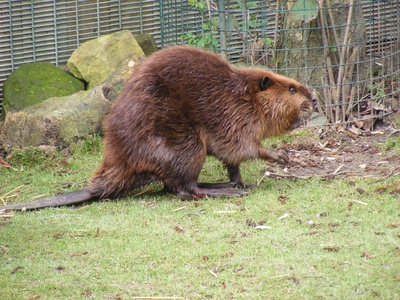
American Beaver
Keystone ecosystem engineer that fells trees to build dams, creating ponds and wetlands that boost biodiversity. Their activity shapes wetland hydrology and provides habitat but occasionally conflicts with human land use.
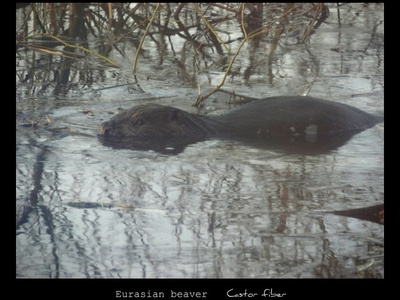
Eurasian Beaver
Similar to North American beaver; creates wetlands by damming streams. Historically hunted, populations recovering in many regions; beavers enhance habitat complexity and increase wetland-dependent species richness.
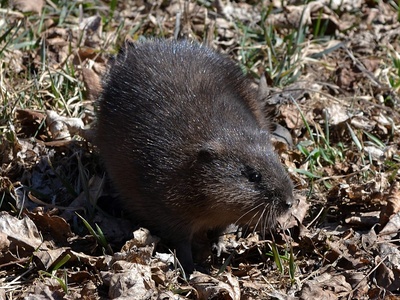
Muskrat
Semiaquatic rodent that builds lodges and burrows in emergent vegetation. Feeds on aquatic plants and small animals; an important prey item and ecosystem engineer in temperate wetlands, affected by water pollution and habitat loss.
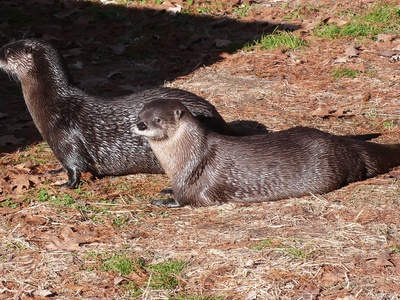
North American River Otter
Playful, agile predator that feeds on fish and crustaceans in freshwater wetlands. Requires clean water and riparian cover for dens; good indicator of healthy aquatic ecosystems and subject of habitat restoration efforts.
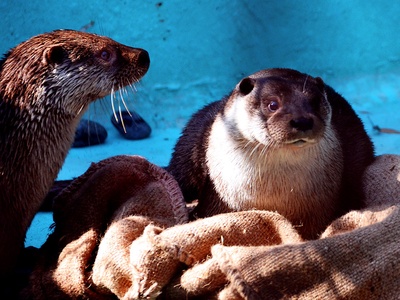
Eurasian Otter
Solitary aquatic predator that needs clean water and abundant fish. Uses riverbanks and reedbeds for dens; recovering in places with pollution control but still vulnerable to habitat fragmentation.
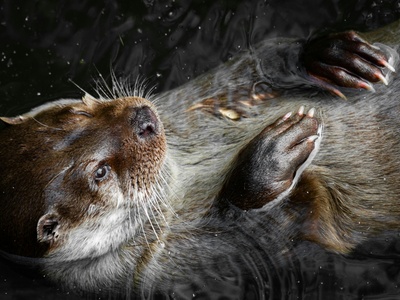
American Mink
Semi-aquatic mustelid that hunts fish, crustaceans and birds along wetlands. Highly mobile predator, adaptable but impacted by habitat loss and water pollution; invasive in some regions outside its native range.
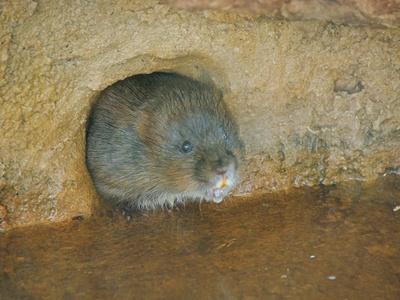
Water Vole
Small herbivorous rodent that burrows into wet banks and feeds on vegetation. Keystone prey for carnivores and indicator of well-vegetated water margins; UK populations declined from habitat loss and mink predation.
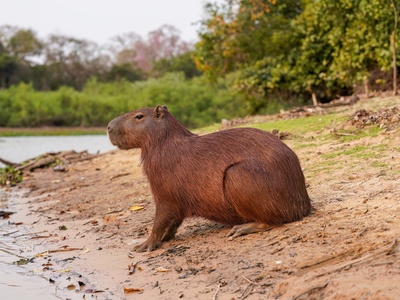
Capybara
World’s largest rodent, highly social and semi-aquatic, grazing on marsh vegetation. Important ecosystem engineer that influences plant communities and provides prey for large predators; strongly tied to freshwater wetlands.

Platypus
Unique egg-laying mammal that probes riverbeds with electroreceptive bill to find invertebrates. Requires clean, slow-flowing wetlands and stable banks for burrows; sensitive to water pollution and habitat modification.
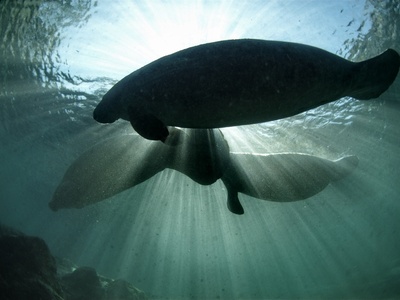
West Indian Manatee
Large, slow-moving herbivore grazing on seagrasses in coastal wetlands and estuaries. Vulnerable to boat strikes and habitat loss; mangroves and estuarine seagrass beds are critical for feeding and calving.
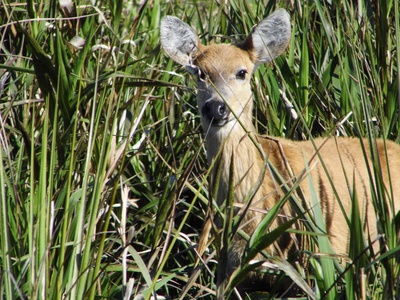
Marsh Deer
Large deer specialized for flooded wetlands, grazing aquatic plants. Populations decline from wetland drainage and hunting; serves as an indicator of large intact wetland ecosystems in South America.
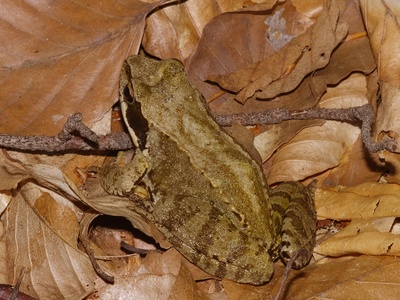
Common Frog
Widespread pond-breeding frog that lays eggs in shallow water. A common amphibian predator of insects and prey for birds and fish; sensitive to pollutants, habitat fragmentation and pond loss.
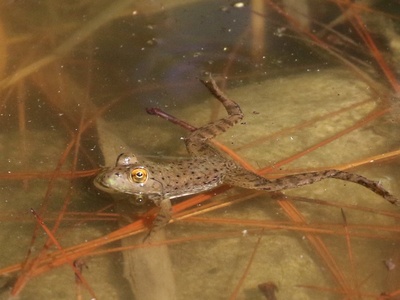
American Bullfrog
Large, vocal frog that preys on diverse animals and breeds in still waters. Invasive in some regions, it can outcompete native amphibians; presence indicates standing water with abundant prey.

Marsh Frog
Large pond frog that frequents reeds and shallow water to breed. Eats invertebrates and small fish; often dominant in productive wetlands and used to judge amphibian community health.
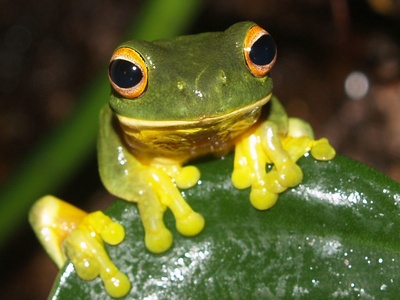
Green Tree Frog
Arboreal frog found on vegetation near wetlands, calling loudly during breeding season. Eats insects, helps control pests; dependent on wetlands with healthy vegetation for breeding sites.
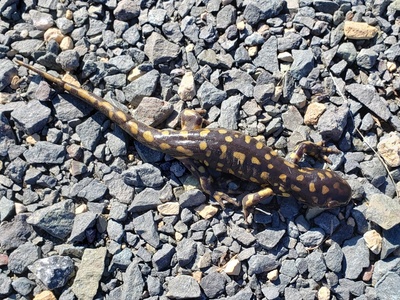
Tiger Salamander
Large mole salamander that breeds explosively in seasonal ponds. Larvae develop in water before moving to upland burrows; requires both aquatic breeding habitat and terrestrial cover to complete life cycle.
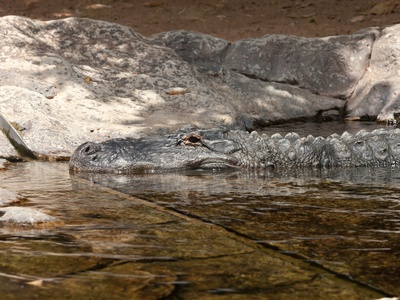
American Alligator
A top predator shaping marsh ecosystems by creating gator holes that hold water during dry spells. Keystone species that maintains wetland diversity; conservation success but still threatened by habitat alteration and development.

Nile Crocodile
A large apex predator of rivers and marshes that helps regulate fish populations. Uses wetlands for nesting and basking; human-wildlife conflict and habitat change threaten some populations.
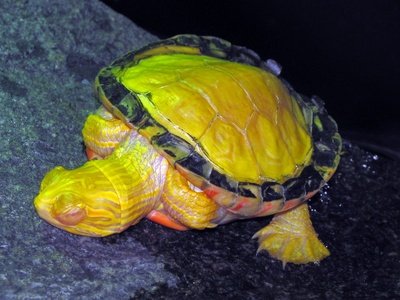
Freshwater Turtle (Painted Turtle)
Common basking turtle that feeds on aquatic plants, invertebrates and small fish. Uses wetlands with basking logs and soft mud for foraging; vulnerable to road mortality and wetland loss.
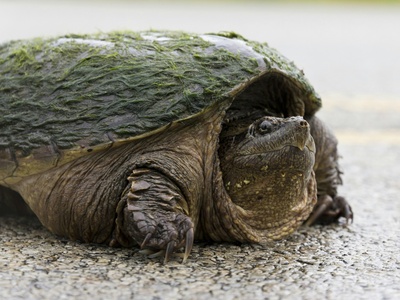
Snapping Turtle
Large omnivorous turtle that ambushes prey in shallow water and nests on land. Important scavenger and predator in wetlands; populations affected by nest predation and habitat fragmentation.
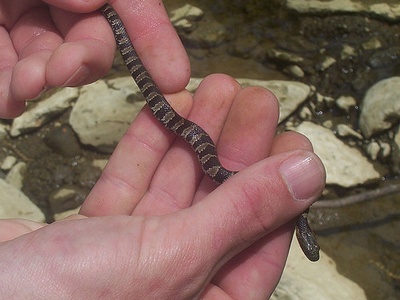
Northern Water Snake
Non-venomous snake that hunts fish and amphibians in shallow waters. Often abundant in marshes, controlling prey populations; susceptible to persecution due to mistaken identity as venomous species.
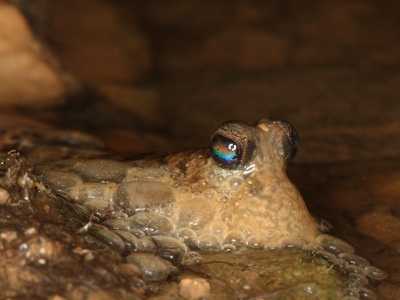
Mudskipper
Amphibious fish that walks on mudflats using pectoral fins, feeds on algae and small invertebrates. Iconic of mangrove ecosystems, demonstrates remarkable adaptations to intertidal wetlands.
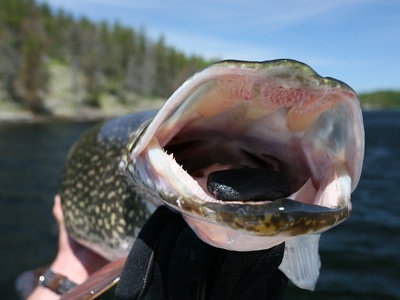
Northern Pike
Ambush predator in vegetated wetlands and shallow lakes feeding on fish and amphibians. Key top predator influencing prey populations; valued by anglers and dependent on vegetated wetland structure.
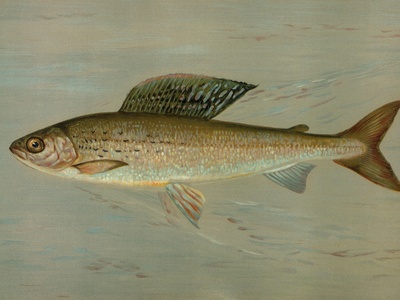
Common Carp
Large omnivorous fish that disturbs sediment while feeding, often degrading water clarity and vegetation. Common in freshwater wetlands and floodplain lakes; invasive where introduced and impacts wetland ecology.
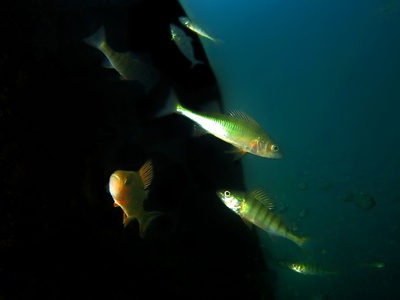
European Perch
Predatory fish common in vegetated freshwater wetlands that feeds on invertebrates and smaller fish. Important prey and predator in wetland food webs; responds to water quality and habitat structure.
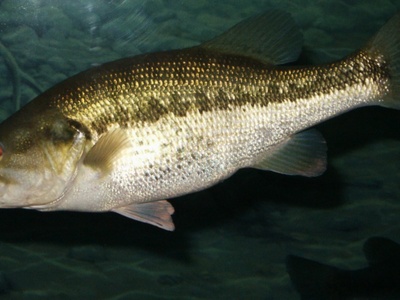
Largemouth Bass
Popular sportfish that ambushes prey from cover in marsh channels and ponds. Influences fish community structure; requires healthy wetland vegetation and water quality for recruitment.
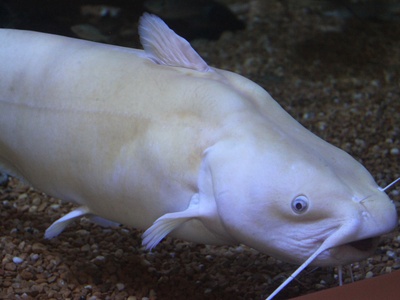
Channel Catfish
Bottom-feeding scavenger common in freshwater wetlands and slow-moving channels. Important to recreational fisheries; sensitive to pollution but tolerant of various wetland conditions.
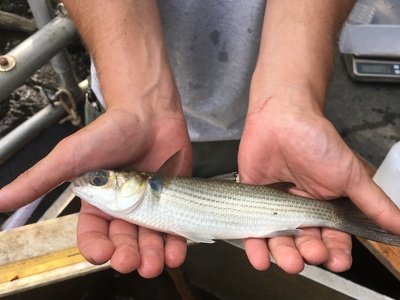
Striped Mullet
Coastal fish that uses brackish wetlands and mudflats to feed on detritus and algae. Important food web link between estuaries and nearshore fisheries, common in mangroves and tidal lagoons.
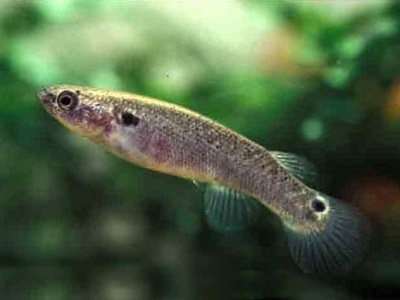
Mangrove Rivulus
Small killifish uniquely tolerant of variable salinity and low oxygen, often in mangrove pools. Can survive out of water in moist leaf litter, a specialist of mangrove wetland microhabitats.
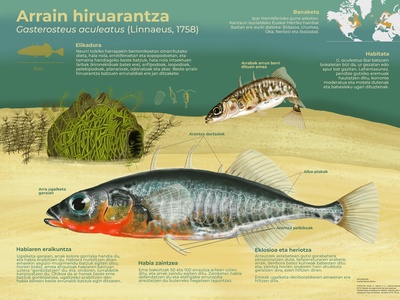
Three-spined Stickleback
Small, armored fish that uses brackish wetlands and tidal creeks. Important prey for birds and larger fish, shows local adaptations to freshwater and saltwater wetland habitats.
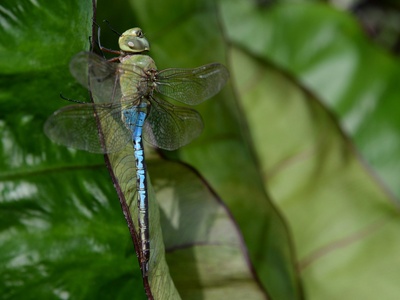
Common Green Darner
Large, migratory dragonfly whose nymphs develop in ponds and marshes, preying on aquatic invertebrates. Adults are aerial predators and pollinators; good indicators of wetland water quality and habitat connectivity.
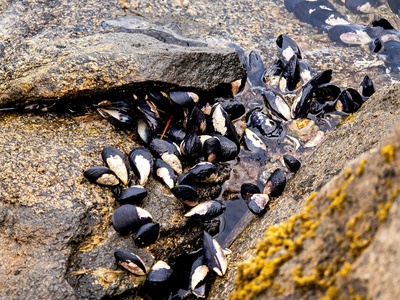
Freshwater Pearl Mussel
Long-lived mussel that filters water in clean streams and riverine wetlands; requires host fish for larval stage. Highly threatened by pollution, siltation and habitat fragmentation, conservation focuses on water quality.
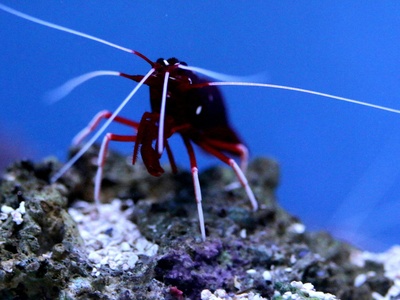
Signal Crayfish
Burrowing and foraging freshwater crustacean that alters wetland banks and competes with native species. Important in food webs but invasive where introduced, affecting wetland vegetation and native fauna.
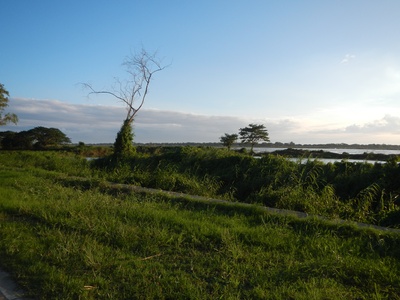
Marsh Snail (Great Pond Snail)
Common aquatic snail grazing on algae and detritus in freshwater wetlands. Serves as food for birds, fish and invertebrates and participates in nutrient cycling within pond ecosystems.
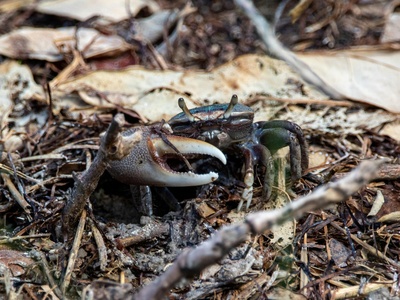
Fiddler Crab
Small intertidal crab that excavates burrows in mangrove and salt-marsh mud, aerating sediments and recycling nutrients. Males use enlarged claw displays for mating; keystone in mangrove benthic ecology.
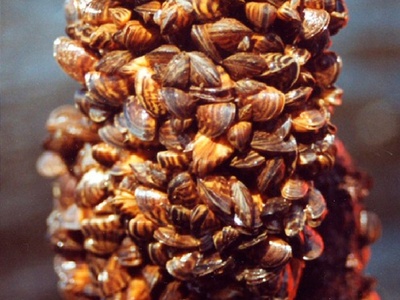
Zebra Mussel
Small bivalve that attaches to hard surfaces in freshwater wetlands, filter-feeding and altering nutrient dynamics. Highly invasive, can clog infrastructure and drastically change wetland food webs.

Palaemonetes (Grass Shrimp)
Small shrimp common in brackish marshes and tidal creeks that feed on detritus and algae. Key prey for fish and birds; abundance reflects estuarine productivity and habitat quality.
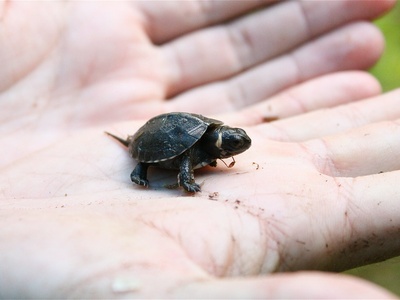
Bog Turtle
Tiny, secretive turtle that depends on open, sunny sphagnum bogs and wet meadows. Highly threatened by habitat loss and illegal collection; conservation focuses on protecting specialized wetland habitat.
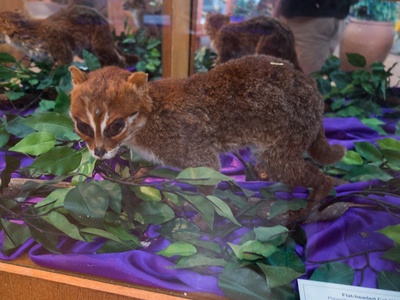
Flat-headed Cat
Small wild cat that specializes in hunting fish and crustaceans in freshwater and brackish wetlands. Highly threatened by peatland drainage and deforestation; a wetland-dependent mammal seldom seen.
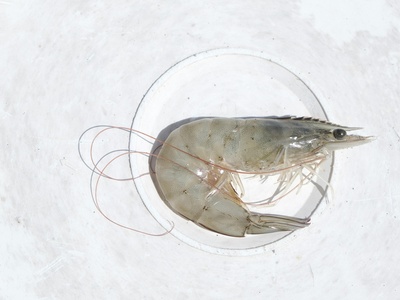
Shoal Grass Shrimp (Palaemon varians)
Common estuarine shrimp that grazes on detritus and supports fish and bird diets. Tolerant of wide salinity ranges, integral to tidal wetland food webs and sediment processing.

Eurasian Bittern
Large cryptic heron that inhabits dense reedbeds, booming call during breeding season. Predatory on fish and amphibians; reedbed conservation critical for its survival and thriving populations.
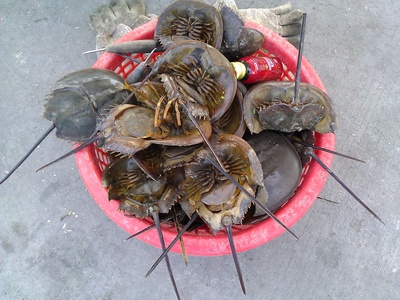
Mangrove Horseshoe Crab
Living fossil that spawns on mudflats and supports shorebird migrations; eggs are vital food for migratory birds. Dependent on mangrove and estuarine habitats, vulnerable to coastal development.
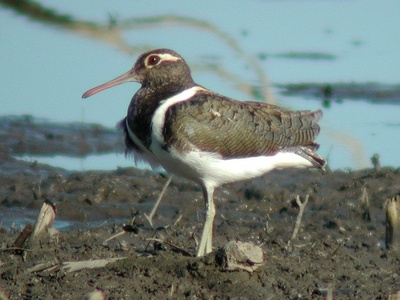
Painted Snipe
Cryptic wading bird that probes muddy edges for invertebrates and seeds. Prefers dense marsh vegetation; populations decline where wetlands are drained or converted for agriculture.
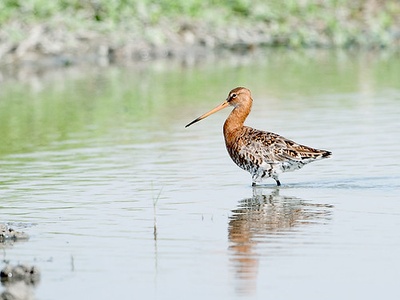
Black-tailed Godwit
Long-billed wader that probes soft mud for invertebrates. Breeds in wet meadows and flooded grasslands; populations sensitive to drainage and intensive agriculture, making wetland protection vital.
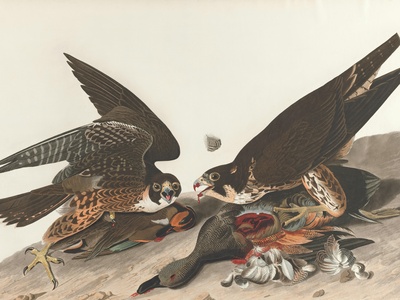
Peregrine Falcon (wetland-associated populations)
Although not wetland-restricted, many populations hunt shorebirds over marshes and tidal flats. Fast aerial predator that influences shorebird behavior and depends on healthy wetland prey populations.
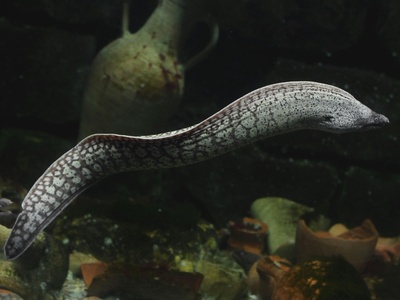
European Eel
Catadromous eel that spends growth phase in freshwater wetlands and migratory journeys to the Sargasso Sea. Declining populations due to barriers, pollution and overfishing; wetlands are crucial juvenile and adult habitats.
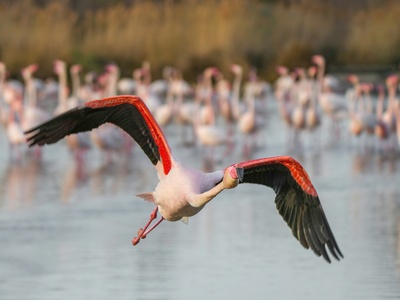
Greater Flamingo
Filter-feeding wader that uses shallow saline wetlands to sieve crustaceans and algae, creating pink plumage. Colonial breeder relying on protected saline marshes and mudflats; sensitive to water-level and salinity changes.
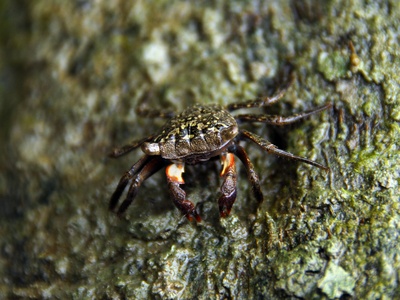
Mangrove Tree Crab
Small semi-terrestrial crab that climbs mangrove trees feeding on leaves and detritus. Important in leaf litter processing and nutrient cycling; dependent on healthy mangrove forest structure.
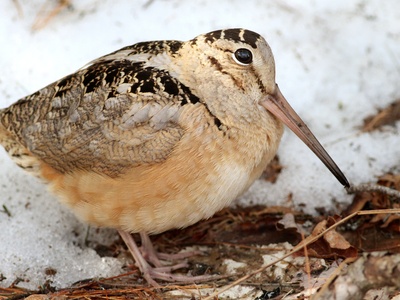
American Woodcock
Secretive shorebird that probes soft soil and muddy edges for earthworms in damp forests and wetlands. Dramatic nocturnal courtship flights; relies on moist early-successional habitats near wetlands for feeding and nesting

Northern Lapwing
Distinctive crested plover that nests in wet meadows and flooded fields, feeding on invertebrates. Populations have declined with drainage and agricultural intensification; a sentinel species for wet grassland conservation.
